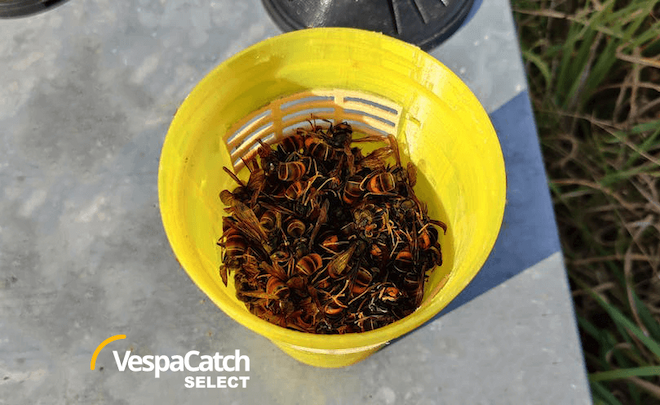 by Véto-pharma
by Véto-pharma The Asian hornet (Vespa velutina), also called the “yellow-legged hornet”, continues to spread across Europe, threatening biodiversity and beekeeping. In response, Veto-pharma has developed a new, highly selective and affordable trap. Preliminary field tests conducted in Spain have delivered encouraging results, suggesting this tool could play a key role in environmentally responsible hornet control.
Introduced accidentally into southwestern France around 2004, Vespa velutina has become a major concern across Europe. The species preys heavily on honey bees and other pollinators, causing ecological imbalance and economic loss. With eradication now deemed unfeasible, the focus has shifted to managing its local impact.
Unfortunately, many existing traps on the market, while advertised as selective, often capture a wide range of non-target insects, further harming native entomofauna. A better, more selective solution is needed.


Véto-pharma’s newly launched trap, VespaCatch Select, is engineered to specifically attract and capture Vespa velutina while minimizing impact on other insects. It also comes with a competitive price, making it accessible for use by local authorities, farmers, and environmental groups.
To test its effectiveness, a team of Spanish researchers and associations carried out coordinated field trials in two of the most affected regions: Asturias and Catalonia.
The trials took place from September 1 to 15, 2024. Researchers deployed four combinations of trap and attractant in two types of environments:
Every insect captured was taxonomically identified to evaluate the selectivity of each combination.
The results were clear and promising:
Statistical analysis (Mann-Whitney U test) validated the trap’s high selectivity. This represents the best recorded reduction in non-target insect captures among traps tested.
While the trap does not stop the spread of Vespa velutina, it provides a valuable tool for localized pressure reduction. Its design includes lateral slits that allow smaller insects to escape—further protecting native biodiversity. Additionally, the size of the entrances can be easily adjusted depending on the season: 9 mm for trapping foundresses in spring, and narrowed to 8 mm for worker trapping in autumn.
The researchers caution that a longer-term study is still needed to assess its impact on species with different seasonal behaviors. However, the preliminary results suggest this trap offers a rare balance between effectiveness and ecological responsibility.
____
In conclusion, Véto-pharma’s trap marks a significant step forward in the targeted management of the Asian hornet. It could become an essential part of integrated pest management strategies across affected regions.
References:
 by Véto-pharma
by Véto-pharma  by Antonio Pajuelo
by Antonio Pajuelo